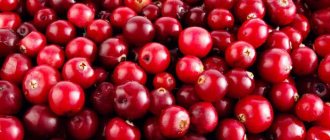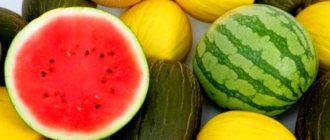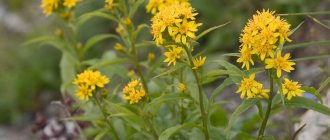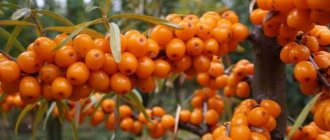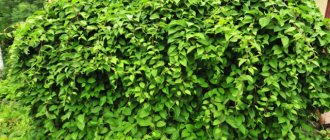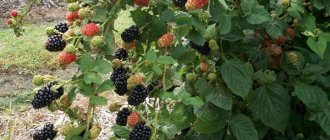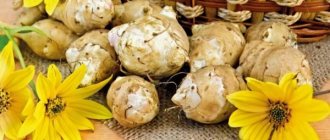Home page Wildlife World of plants
40 288 3.8 0
According to research by Chinese scientists, swamp, garden or forest cranberries not only help with inflammation of the bladder, but can also prevent the occurrence of stomach ulcers. It turned out that people who constantly drink compote or cranberry juice, or simply like dried cranberries, cranberries in sugar, are much less likely to suffer from these diseases, since the substances contained in the berry actively prevent the emergence of disease-causing bacteria.
Planting and caring for cranberries
- Planting: in early spring, when the soil has thawed to a depth of 8-10 cm.
- Lighting: bright sunlight.
- Soil: very wet to swampy, in an area with high groundwater levels, acidic (pH 3.5-4.5), peaty or mossy forest.
- Watering: the first two weeks after planting - daily, then the soil is kept slightly moist. In May and June, watering should be moderate, and in hot weather - daily. From August to October, cranberries are watered regularly, trying to wet the soil to the depth of the roots.
- Feeding: regular: in the first year - from spring to the end of July once every two weeks with complex mineral fertilizers. The first fertilizing is applied three weeks after planting. In mid-August and mid-October, potassium-phosphorus fertilizer is applied. In the second and third years, cranberries are fertilized according to the same scheme, and starting from the fourth year, the concentration of fertilizers in solutions is weakened and 6 fertilizing treatments are carried out per season.
- Pruning: in May, the bush is formed for three years, and then only annual sanitary cleaning is done.
- Reproduction: seeds or green cuttings.
- Pests: black-headed lingonberry moth, apple moth, gypsy moth, cabbage cutworm, heather moth and more than 30 other pests.
- Diseases: terry (overgrowth), botrytis, ascochyta blight, pestalotia, gibber spot, cytosporosis, phomopsis, moniliosis, snow mold, red spot.
Read more about growing cranberries below.
Botanical description
Cranberry is a creeping plant. Its evergreen bushes reach a height of 15 to 60 cm. The plant has a taproot system. The alternate cranberry leaves, located on short petioles, have an ovoid or oblong shape. They reach 15 mm in length and 6 mm in width. The upper side of the leaf blade is dark green, the lower side is whitish due to a waxy coating that protects the leaves from water. Cranberries begin to bloom in May or June with pink or light purple flowers opening on long stalks, each of which lasts 18 days. The cranberry fruit is an ovoid or spherical sour red berry with a diameter of up to 16 mm.
Despite the fact that cranberries are very popular due to their healing properties, they are not as common in cultivation as gooseberries, raspberries, strawberries, black or red currants. However, recently, along with such crops as strawberries, blackberries, blueberries and blueberries, they have begun to gain more and more space in our gardens. For those gardeners who have not yet grown this wonderful berry, we suggest reading our article, which provides information on how to plant and care for cranberries in the garden, what diseases and pests of cranberries can complicate its cultivation, how to propagate cranberries, and what to feed them cranberries to increase their yield, as well as what care cranberries need after harvesting.
Description of the plant
An evergreen small shrub belongs to the Heather family. The flora amazes with the variety of varieties that are constantly increasing. The plant thrives both in warm climates and near the Arctic Circle. The length of thin shoots can be up to 30 cm. The leaves are ovoid, dense and shiny. The flowering period lasts 1 month, starting in summer. Flowers are collected in 2-3 pieces on one peduncle. The fruits are red or bright pink with juicy pulp and a bluish coating.
Important! You can even harvest berries that are not fully ripe, since over time they can ripen to the required condition. But you shouldn’t pick the green ones - in this case, nothing will work.
Ripening occurs in autumn. The fruits can easily be stored until spring. More often they are used fresh, but they are often prepared into fruit drinks, jams, jelly, cocktails, kvass, and added to salads and sauces. All this is explained by the multicomponent composition of this fruit.
Planting cranberries
When to plant
It is best to plant cranberries in early spring, as soon as the soil in the area has thawed to a depth of 8-10 cm. Choose an open, sunny place with a high degree of humidity for cranberries. It is desirable that groundwater lies close to the surface. If there is a stream, pond or lake in your garden, plant cranberries on its bank, and it is not so bad if it is partially in the shade of trees growing nearby.
- Crocuses - growing in the garden
Cranberries love acidic (pH 3.5-4.5) peat soil or forest substrate with sphagnum, and if you don’t have one on your site, cut off the top layer of soil 20-25 cm thick and replace it with a mixture of approximately the following composition: forest humus, sand, forest soil and peat in a ratio of 1:1:1:2 with the addition of rotted pine needles.
Planting in spring
Before planting cranberries, dig holes 10 cm deep at a distance of 20 cm from each other and water them with warm water. Place 2 seedlings 15-20 cm high in each hole, then fill the hole with soil, but do not compact it. You will receive the first berries only in the third year after planting, and the cranberries will produce a full harvest only in the fourth year - on average, half a kilogram from each m² of plot. For the first two years, cranberries will simply decorate your garden with their picturesque thickets, which are often used by designers to decorate the landscape.
Autumn planting
Cranberries are not planted in the fall, but it is advisable to prepare the site for spring planting in September. And first of all, you should fence off the future cranberry bed by digging non-rotting material - slate, plastic, pieces of roofing felt - into the soil along its perimeter to a depth of 20 cm. This fence should rise 20-30 cm above the ground.
Kinds
Cranberry bushes growing in Europe and America differ significantly from each other: the European berry is smaller and full of spots. The fruits also differ in their cell structure: the American berry contains three sets of chromosomes, while the European berry has two.
Another difference is that the American berry contains air chambers that allow it to float on the surface of the water.
This greatly facilitates the collection of fruits: berries on cranberry plantations are grown in special checks. After ripening and hand-picking the best berries, they are filled with water and a special technique is launched, which, by whipping the water, causes the ripened fruits to come off and float. Then they are gradually brought to one of the edges of the check, where the clean and washed ones are scooped out into specially prepared containers.
Cranberry bushes are also divided into wild and garden, which can be grown in your own garden:
- Swamp cranberry is the most common cranberry in the eastern hemisphere; the berries of this variety are bright red. Swamp cranberry contains a huge amount of vitamin C, as well as many micro- and macroelements. People have long noticed the beneficial properties of swamp cranberries and learned to use them: dried cranberries and cranberry compote were used in the treatment of vitamin deficiency, colds, and sore throats. The juice of the berry was used to lubricate open wounds to speed up healing. For example, Indian shamans made compresses from the juice of the berry, thanks to which the poison received from a wound with a poisonous arrow was drawn out of the wounds (the benefits of cranberries in treatment were enormous).
- Wild berries are considered one of the most useful berries growing in the wild; they grow not only in wetlands, but also in peat soil.
- Garden cranberry - this species can be grown on your own plot: it feels excellent in peat-rich soil. The berries of this variety are much larger than those of the wild plant, and planted shrubs can bear fruit for about half a century.
Cranberry care
How to care in spring
Growing cranberries is not difficult. At the beginning of spring, when the berry garden becomes green, thin out the cranberries and feed them with full mineral fertilizer, taking into account that its concentration should not be strong - cranberries tolerate a deficiency more easily than an excess of fertilizers. Keep the soil slightly moist at all times, loosen it and regularly remove weeds from the area. Since cranberries are pollinated by bees, plant honey plants - savory, oregano, etc. - next to the cranberry bed.
Caring for cranberries in summer
In summer, especially in the second half, make sure that the soil in the garden bed does not dry out. Since cranberries grow well only in acidic soil, when watering three- to four-year-old bushes, add vinegar or citric acid to the water. If you think your cranberries are not growing well, feed them by adding fertilizer to your watering water.
As a preventive measure or if necessary, treat cranberries with fungicides. Loosen the soil on the site and fight weeds - for the first three years, weeding the garden bed should be a regular procedure. Areas with cranberries older than three years are mulched every 3-4 years with a layer of peat chips or coarse sand 1.5-2 cm thick.
Growing conditions in autumn
In autumn, it is time to harvest - in September-October, cranberry fruits are harvested unripe. The berries ripen during storage.
How to care for cranberries after harvest? To protect cranberries from pests and diseases, snowless winters and spring frosts, at a temperature of -5ºC, cranberries are poured several times with water in a 2 cm layer, allowing each layer to freeze through until the plants are completely hidden under the ice. If the winters in your area are not too severe, you can simply cover the cranberries with spruce branches or spunbond.
Treatment
In order to protect cranberries growing in constantly moist soil from fungal diseases, it is necessary to carry out preventive treatments of the crop with fungicides several times during the growing season. In the spring, during the period of swelling and bud opening, cranberries are sprayed with one percent Bordeaux mixture or Azophos.
During the budding period, cranberries are treated three times with an interval of a week to remove gray mold and spots with a solution of 4 g of Skor or Horus preparations in 10 liters of water. If necessary, after flowering, treatment of cranberries against gray mold can be carried out again. In November, the area is treated with one percent Bordeaux mixture.
Watering
The first two weeks after planting, cranberry seedlings are watered daily, but then the following rule should be followed: the soil should be moist all the time, but not wet. In May and June, watering should be infrequent and moderate, since excess water at this time negatively affects the quality of the berries. During peak heat, cranberries need cooling watering, and during periods of prolonged drought, the soil should be moistened daily. From August to October, regular watering of cranberries is necessary. It is necessary to moisten the soil to the depth of the root layer.
Top dressing
Caring for cranberries involves regular feeding of the plant. In the first year of growth, cranberries are fed for the first time 3 weeks after planting with Universal complex fertilizer at the following rate: half a tablespoon of fertilizer per m² of plot. Continue this feeding every 2 weeks until the end of July. In mid-August, and then in mid-October, cranberries are fed with Autumn fertilizer at the rate of a third of a spoon per m².
Cranberries of the second and third years are fertilized according to the same scheme, and from the fourth year the amount of fertilizer is reduced - during the growing season, 6 fertilizing is carried out at the rate of one third of a tablespoon of fertilizer per m².
- Rowan: cultivation, types and varieties
How cranberries are harvested
Since the plant grows at a great distance from human habitation, the collection process requires responsibility and care. Visiting swamps and forests is very dangerous, especially if you do not know the area. Harvesting cranberries is much more difficult than blueberries, blueberries or lingonberries.
Cranberries and lingonberries: differences
Like any grass growing in a swamp, cranberries intertwine shoots and spread along the ground. At first glance, it is very difficult to see the red beads of the berries, since they are hidden in moss and foliage. Picking cranberries is a very difficult process, since it requires not only time and effort to search for berry fields in the swamps, but also the process of sending the berries into the basket. The picker can squat for hours, pushing aside moss and tangled shoots, picking berries one at a time. Anyone who doesn’t know what a cranberry plant is should not go looking for berries. Before going into a swamp or forest, you need to know almost everything about the beneficial cranberries, especially how and where cranberries grow.
Important! To make harvesting more convenient, people have long come up with special combs that lift the shoots. In this raised state, the berries are much easier to put into baskets. There are also special harvesters on sale for harvesting cranberries, but their use harms the bushes of the plant, so in many regions of Russia the use of such devices is prohibited by law.
It is especially strict with such prohibitions in protected areas.
Today, cranberries are grown for industrial purposes. The plant is provided with proper care; man has learned not to rely on nature, but to independently harvest a useful treasure. To collect cranberries for industrial purposes, special technology and equipment are used.
Large cranberry plantations are located in swampy pits with peat soil. Before harvesting the berries, the plantations are deliberately flooded with water, and the light berries float to the surface. Then a special tractor is launched, which tears the ripe berries from the shoots, and they remain floating on the surface. They are already caught with special nets.
Important! The wild plant on which such a tasty berry ripens is very useful and has been valued since ancient times. But collecting such healthy delicacies is not possible for everyone, since this process is very labor-intensive and time-consuming.
To date, it has been possible to develop a large number of beak varieties that can germinate at home. It is important to comply with many requirements and features. If you want, you can try it.
Cranberry pruning
When to prune
Cranberries are pruned in the spring, in May. The first three years, while the bush grows, lay the foundation for its shape - compact or spreading.
Pruning in spring
How to prune cranberries? If you decide to form a compact tall bush, cut off all the thin, low-winter-hardy creeping shoots in the spring, stimulating the growth of vertical branches, and if you prefer “spreading cranberries”, stimulate the formation of horizontal shoots by pruning. But keep in mind that it is easier to pick berries from a tall bush.
Autumn pruning
In autumn, cranberries are pruned only if absolutely necessary.
Cranberry propagation
Reproduction methods
Cranberries are propagated generatively and vegetatively. Seed propagation is carried out mainly for selection experiments, since the daughter plant does not inherit the characteristics of the mother plant. If you want to immediately obtain varietal seedlings, carry out green cuttings of cranberries.
Propagation of cranberries by cuttings
Green cranberry cuttings are harvested during the period of intensive shoot growth. The length of the cuttings should be at least 10 cm. They are planted in shkolka, pots with a substrate of high-moor peat with sand and rotted needles, or immediately in a permanent place - according to the 7x7 cm pattern, so that the cranberry branches close together more quickly. The cuttings are buried 2-3 cm, after planting the soil is slightly compacted and watered abundantly. Until the cuttings take root, make sure that the soil is kept moist at all times - sometimes you will have to water the bed twice a day.
On days of merciless sun, provide fabric protection for the seedlings. Cranberry cuttings usually take root quickly and easily.
Growing from seeds
To obtain seed, well-ripened cranberries on the bush are mashed and washed in plenty of water, the seeds are allowed to settle on a sieve and sown immediately. If cranberry seeds have been stored for some time before planting, they must be stratified. Layer the seeds in a box with a damp mixture of peat and sand in a ratio of 4:1 and keep for 2.5-3 months at a temperature of 3 to 7 ºC with free access of air. Sow seeds in spring (after stratification) or at the end of summer (freshly collected) in containers with high-moor peat - on the surface of the substrate, without digging into it. They are covered with a layer of sand 2-3 mm thick through a sieve or covered with a layer of crushed peat up to 5 mm thick, after which they are watered, covered with glass and placed in a bright, warm place.
Crops need to be regularly moistened and ventilated, and if mold appears on the surface of the substrate, it must be treated with a fungicide. Shoots will appear in 2-4 weeks, after which the glass is removed, but watering does not stop. At the development stage, seedlings have 4-5 leaves; they are planted one at a time in pots or on a bed in a greenhouse at a distance of 10 cm from each other. The seedlings are grown throughout the year, watering and feeding them regularly with a solution of 1 tablespoon of Kemira-universal in 10 liters of water at the rate of 1 liter per m², being careful not to get the solution on the leaves, otherwise they may burn.
From mid-April to mid-July, fertilizing is applied every two weeks. In August, the covering from the greenhouse is removed, and at the end of October the bed is mulched with a layer of peat 5-7 cm thick and covered for the winter with two layers of spunbond. In the spring, the spunbond is removed, and the seedlings are transplanted into a schoolhouse, where they grow for another year or two, after which they are transplanted to a permanent place. You can get a harvest of berries from bushes grown by seed 2-3 years after planting in a permanent place.
Bog cranberry in cosmetology
Photo: https://pixabay.com/photos/girl-portrait-tenderness-sky-1768766/
Hair care
Cranberries are a source of vitamins and nutrients that give hair shine and silkiness. It is better not to use ready-made hair care products; they contain very few natural raw materials; it is better to prepare masks yourself by adding berries whipped in a blender.
- Mask against brittle hair. Mix 2 tablespoons of cranberries, a spoonful of buckwheat flour and olive oil, 1 egg and a teaspoon of honey in a blender. Apply the resulting mask to your hair, then put on the bag and wrap your head with a towel. After half an hour, rinse with water and shampoo. It is recommended to make a mask twice a week for 5-6 weeks.
- Hair strengthening mask. Mix a slightly warmed teaspoon of burdock oil, a tablespoon of honey and 3 tablespoons of cranberries in a blender. Apply to your head, rub in, put on the bag and wrap with a towel. Wash off after 30-40 minutes. To get results, you need to make a mask 2 times a week, the number of masks is 10-15.
- Mask for volume and shine. Add a pinch of parsley and a tablespoon of olive oil to the berries mashed in a cup (3 tablespoons). Apply evenly to hair, wait half an hour and rinse.
In the fall, it is very useful to simply rub cranberry juice into the roots of your hair to rid it of the fragility that it has acquired due to an increased dose of summer ultraviolet radiation.
Facial care
Swamp cranberry has also found its use in cosmetology. Masks based on this berry are a godsend for women. They tone and moisturize the skin, nourish it, saturate it with vitamins, whiten, help fight fine wrinkles, and get rid of age spots and acne.
Masks based on fresh berries are not suitable for women with sensitive skin; they contain a lot of ascorbic acid.
The duration of application of cranberry masks should not be more than 20 minutes. Before applying each mask, you should test it on a small area of skin.
- Mask for dry and normal skin. Carefully chop 3 tablespoons of berries and mix them with 2 tablespoons of sour cream and 1 egg yolk. Apply to skin and leave for 20 minutes. In addition to the nourishing effect, the mask has whitening properties.
- Mask for oily skin. Helps remove shine and reduce irritation. Mix a crushed spoon of cranberries with a spoon of oatmeal, apply to the skin and rinse after 15 minutes. The course consists of five masks, performed every other day.
- Mask to reduce pores. Mix 1 tablespoon each of cranberry juice, finely grated apple and potato starch. Apply for 20 minutes.
- Mask for aging skin. Pre-soak a tablespoon of gelatin in half a glass for an hour. Mix the following ingredients in a blender: 2 tablespoons of cranberries, gelatin, grapefruit juice (spoon), 5 red grapes (seeds removed). It is enough to apply the mask for 15 minutes twice a week. Course – 10 masks.
- Anti-acne mask. Dip a napkin in freshly squeezed cranberry juice and apply to the problem area. After 15 minutes, wash off. It is best to wash off the mask with warm water, but after that you can rinse your face with cold water.
Rubbing your face with frozen cubes of cranberry juice tones and refreshes your skin very well.
Body care
Various cranberry-based creams bring great benefits to the body.
Rubbing your feet with cranberry juice will be an excellent preventive measure against fungal diseases. If you are predisposed to this problem, and not only that, after washing your feet, you need to wipe them with a napkin soaked in cranberry juice.
Rinsing your mouth with cranberry juice also brings great benefits. This procedure will prevent gum disease and prevent the appearance and development of various infections.
For this purpose, cranberry juice must be diluted with water in the following proportions. Just a couple of spoons of juice will be enough for half a glass.
Cranberry diseases and their treatment
Compliance with agricultural techniques will allow you to maintain the health of cranberries at the proper level, but sometimes annoying troubles still happen, and some kind of ailment can affect a healthy cranberry. In such a situation, it is important not to get confused and immediately begin to fight the disease before it affects all the plants, and for this you need to accurately determine the nature of the disease. So, what is wrong with cranberries?
Snow mold is the most harmful disease, which develops from March to April. Symptoms of the disease are a red-brown color of cranberry buds and leaves, on which yellowish mycelium can be seen. By the end of spring, the affected leaves become ashen in color and fall off. If the disease is not dealt with, the lesions increase in size, merge, and the entire plant may die.
Control measures. In the fall, the area is sprayed with a solution of Fundazol in accordance with the instructions, and in the winter, the area is gradually filled with water and frozen in layers.
Red spot is also a fungal disease that deforms shoots and causes them to die. In addition to shoots, red spotting affects cranberry flowers, buds and pedicels, which acquire a pinkish tint. The leaves developing from the affected buds look like small roses.
Control measures. To destroy pathogens, cranberries are treated with a solution of 2 g of Fundazol or Topsin M in 1 liter of water.
- Kobeya: growing from seeds, types and varieties
Monilial burn is a fungal disease that causes the tops of shoots to wither, turn brown and dry out. In humid weather, the affected area turns yellow, and the cranberry becomes covered with a coating of conidial sporulation. At the bud formation stage, the infection passes from diseased shoots to buds, flowers and ovaries, causing the flowers and buds to dry out, and the diseased ovaries continue to develop, preparing a surprise for you in the form of rotting fruits.
Control measures. In the fight against moniliosis, the fungicides Topsin M, Ronilan, Ditan, Bayleton and copper oxychloride have proven themselves well.
Phomopsis is a disease that causes drying of the ends of cranberry shoots without signs of wilting. The leaves first turn yellow, then turn orange or bronze, but do not fall off. The stems become covered with dirty gray spots that turn into cankers. Flowers and fruits turn brown. The disease progresses in dry and hot weather.
Control measures. To destroy the primary infection in the spring, cranberries are treated with Topsin M or another systemic fungicide. Before active growth begins, spraying cranberries with Bordeaux mixture is effective.
Cytosporosis is a black rot of cranberries, the pathogens of which penetrate at the end of summer through small wounds on the plant.
Control measures. Treatment of cranberries for black rot - preventive treatments at the beginning and end of the season with Bordeaux mixture, Topsin M or copper oxychloride.
Gibber spot is dangerous because it causes massive premature leaf fall, which greatly weakens the plant. In early August, small red-brown spots appear on the leaves, then shapeless and chlorotic spots with a dark rim and fruiting bodies in the center.
Control measures. Hiberra is destroyed by treating cranberries with a solution of 2 g of fungicide (Topsin M, Fundazol, copper oxychloride) in 1 liter of water.
Pestalocia affects the fruits, stems and leaves of cranberries. First, dark brown spots appear on the greenery, then outlined by a dark border and gray spots merging with each other. Young shoots bend in a zigzag manner and dry out, the leaves fall off.
Control measures. Treating cranberries with copper oxychloride will help cope with the disease.
Ascochyta blight can be recognized by round dark brown spots on the leaves and stems of cranberries. As the disease progresses, the surface underneath these spots cracks.
Control measures. An effective remedy for ascochyta blight is treating cranberries in spring and autumn with fungicides - Fundazol, Topsin M, copper oxychloride.
Botrytis - this disease, which covers the stems, leaves and flowers of cranberries with a gray fluffy coating of fungus in wet weather, does not affect young shoots. Another name for the disease is gray rot.
Control measures. Treat cranberries with Bordeaux mixture, Topsin M or copper oxychloride.
Cranberry blight, or sprouting, is a viral disease caused by mycoplasma organisms. The affected parts become like “witches' brooms” - the shoots rise, the leaves become smaller and fit tightly to the shoots. Cranberries affected by growth do not bear fruit, and those ovaries that had already formed before the onset of the disease produce small, ugly fruits.
Control measures. How to spray cranberries to destroy growth pathogens? Such drugs have not yet been invented, so you just need to remove the diseased plant from the garden and burn it so that the disease does not spread throughout the garden.
When to collect and how to store cranberries
Having figured out what properties cranberries have, we will find out how to properly collect them and store them for a long winter period.
You can pick berries in summer, autumn and spring. The optimal time is the end of September–beginning of October, before the first frosts begin on the ground. But it is worth noting that cranberries are surprising in that they are able to overwinter on the branches of a shrub.
Severe frosts do not damage the berry itself and do not reduce the content of vitamins in it; the amount of sugar increases. From this it is easy to conclude that the sweetest cranberries are spring ones. A decrease in acid levels reduces shelf life; berries do not tolerate transportation and long-term storage.
Cranberries for the winter can be collected in the summer, at which time the berries are quite hard and have a white, not completely colored color. The time will come, and the picked berry will ripen, but will remain quite sour, hard and slightly bitter. Summer harvest cranberries contain an order of magnitude less nutrients. And it doesn't keep well fresh.
When collecting cranberries, pay attention to their color, this is the main indicator of maturity and quality. Ripe berries are dark purple and slightly translucent to light.
Cranberries that have survived frost are the sweetest, but they have a lower amount of vitamin C, which means less benefits. It is valued for its taste and is often used for culinary recipes.
Autumn cranberries are used in winemaking because their skin contains a large number of active microorganisms.
What to do if you have unripe cranberries in your basket? Take a cardboard box, cover the bottom with a soft towel and transfer the berries. This method will be relevant if the berries are slightly unripe and have a small white side. Transfer the box to a dry, warm room and leave for 1-2 weeks. Instead of a box, you can use a wicker basket with a large flat bottom.
Advice! To make cranberries “ripen” faster, add an apple or ripe tomato to the berries. The ethylene gas that is released causes the berries to turn red faster.
You can store cranberries for a long time in several ways: in water, freezing, drying and grinding with sugar.
- To soak cranberries, you only need the berries themselves, a clean glass container and water. Before pouring water over the berries, thoroughly wash the container in which the berries will be stored. Wash and sort the berries. Pour into jars and fill with cold water. There is no need to add anything else. Thanks to its antiseptic properties, such cranberries can be stored for a very long time.
If you brought a large volume of berries, store the bottles in a cool place, this could be a cellar or loggia. A small harvest can be refrigerated. Over time, the berries become saturated with water, their taste becomes less concentrated, but this does not prevent them from being used in the preparation of your culinary masterpieces, juices and fruit drinks.
- The following method can be treated differently, but those with a sweet tooth will certainly like it. The berries must first be washed and dried, sprinkled with sugar and minced. The resulting berry mass is placed in jars, covered with lids and stored in the refrigerator. This method retains much more of the benefits inherent in nature than heat-treated cranberry jam.
You can dry cranberries in the oven or electric dryer. Before this, the berries are washed and dried on a towel. A very tasty dried berry is obtained if it is first boiled in syrup.
- Dried cranberries are prepared using an oven or electric dryer. Sugar is combined with water in a 1:1 ratio and brought to a boil, stirring constantly until the sugar grains dissolve. The syrup is allowed to cool slightly and the washed berries are poured in and left for 6 hours. After time has passed, I pour the syrup back into the pan, bring to a boil and pour over the berries again for 6 hours.
dried cranberries
Bring the syrup with berries to a boil and strain through a colander. Place the berries on an oven tray or on an electric dryer rack.
If you use an electric dryer, regularly change the trays, as they heat up unevenly.
Drying berries in the oven is carried out at a temperature of 50 ⁰C with the door slightly open. The readiness of the cranberries can be determined by touch; they should remain elastic, not crumble in your hands and not be sticky. Store the finished product in linen bags or bulk containers for no more than three years.
Cranberry pests and their control
Cranberries can be affected by more than 40 pests that feed on its ground organs. Most often found on cranberries:
- black-headed lingonberry leafroller;
- apple comma scale;
- gypsy moth;
- cabbage scoop;
- heather moth.
Pests are not able to cause significant damage to cranberries, therefore, protective measures can be limited to compliance with agrotechnical rules for cultivating the crop, and first of all, it is necessary to pay attention to the regular control of weeds that inhibit cranberries and create favorable conditions for harmful insects. Insecticides (Aktara, Aktellik, Karbofos, Metafos and others) should be used only in cases of extreme necessity and no later than a month before harvest, as well as after picking the berries.
Types and varieties of cranberries
The cranberry subgenus is represented by four species:
- large-fruited cranberry;
- four-leaf cranberry, or marsh cranberry;
- small-fruited cranberries;
- giant cranberry.
In cultivation, varieties and hybrids of large-fruited and four-petalled, or swamp cranberries are most often grown.
Swamp cranberry (Oxycoccus palustris)
Of European origin, it was introduced into culture at the end of the 20th century in the Baltic countries and Russia. Of the many varieties of swamp cranberries, the following are well known today:
- Gift of Kostroma is a high-yielding large-fruited mid-early variety, ripening at the end of the third ten days of August, with very large, juicy and sour ribbed berries of dark red or cherry color, flat-round shape, with a deep notch at the stalk;
- Sominskaya is also a medium-early, large-fruited, high-yielding variety with sour and juicy lumpy asymmetrical berries of red or cherry color and heart-shaped;
- Sazonovskaya is a medium-ripening variety (beginning of the first ten days of September) with juicy heart-shaped ribbed-lumpy asymmetrical berries of medium size, purple-red color and sweetish-sour taste;
- Beauty of the North is a productive late variety, ripening by the second ten days of September, with very large round-oval berries of different shades of carmine color - from light to dark with a light red side;
- Scarlet Reserve is a late high-yielding variety with spherical juicy and sour red berries of medium and large size.
The swamp cranberry varieties Khotavetskaya and Severyanka also grow well in cultivation.
Large cranberry
More than 200 varieties of which are known today, originally from North America. Its scientific name is Oxycoccus macrocarpus. Popular varieties of large-fruited American cranberries are:
- Ben Lear is a high-yielding early-ripening variety with round berries up to 20 mm in diameter, which are poorly stored and therefore require immediate processing or freezing after picking;
- Franklin is a mid-season, disease-resistant variety with medium-sized berries (up to 15 mm in diameter), dark red in color;
- Searles is a well-stored productive variety with dark red speckled matte berries up to 23 mm in diameter with dense pulp;
- Stevens is one of the best varieties, distinguished by its ability to produce high yields, with round-oval large and dense berries of a dark red color with a diameter of up to 25 mm;
- Pilgrim is a very late variety with oval large berries of purple-red color with a yellow waxy coating and uneven coloring.
In addition to those listed, such American varieties of large-fruited cranberries as McFarlin, Wilcox, Black Wale, Early Black, Crowley, Early Reard, Bergman, Washington, Wolman, Beckwith and Howes are popular.
What cranberries look like and where to look for them
What does a cranberry look like?
Cranberries belong to the Heather family, genus Vaccinium. The closest relatives in the class are blueberries, blueberries and lingonberries. It grows throughout the Northern Hemisphere.
Cranberries are divided into varieties: ordinary, small-fruited, large-fruited and Vaccinium red-fruited.
The common one belongs to the subshrubs and is found in large numbers in the northern latitudes of Eurasia. Externally, it is easily recognizable by its thin and long shoots of rich brown color. The leaves of the shrub are two-colored: on one side they are rich dark green, on the other they are bluish and have a waxy coating. The flowering period occurs in May-June, at which time pink flowers appear, lowering their heads down. You can go out to collect common cranberries in September. The berries can reach 16 mm in diameter.
The small-fruited variety has creeping shoots that rarely reach a length of 30 cm. The bush is covered with small bicolor foliage up to 0.6 cm in size. The largest berries have a diameter of no more than 8 mm. The variety is listed in the Red Book.
Large-fruited cranberries grow in the USA and Canada. If you go berry hunting, you can easily recognize the shrub by its foliage, which with the onset of autumn takes on a rich burgundy color, and in the spring it turns green again. The fruits of this cranberry are very large - up to 2.5 cm. It is this species that is used for breeding cultivated large-fruited varieties.
Vaccinium redfruit grows in East Asia and the Southern Appalachians. Prefers partial shade. You can start harvesting as early as the end of August.
Interesting fact. From Latin, “cranberry” is translated as “sour ball.” In addition to the usual name, the berry is often called swamp grape, stonefly and bearberry.
If you look into Indian legends, you can find a legend about a berry that grows at the sites of battles of ancient giants. This information is partly true, since cranberries are very fond of tundra and peat bogs, and their age is exactly 12 thousand - 400 million years.
You need to look for cranberry meadows in damp coniferous forests and near swampy lowlands. The shrub is very demanding in terms of growing conditions, so it is not found near environmentally polluted areas.
Manually picking berries is not as simple as it might seem at first glance. The shoots actively intertwine with mosses and form clearings. The latter can be located at a distance of several kilometers from each other.
Properties of cranberries - harm and benefits
Beneficial features
Cranberries contain the entire list of useful substances characteristic of the fruits of all berry crops, including sugars, organic acids (citric, ursolic, quinic, benzoic, malic, chlorogenic, succinic, oleander and oxalic), vitamins (B1, B2, B5, B6 , PP, K1 and C) and pectins. Cranberries also contain anthocyanins, leucoanthocyanins, catechins, betaine, macro- and microelements - iron, manganese, molybdenum, copper, potassium, calcium, phosphorus, boron, cobalt, nickel, titanium, zinc, iodine, tin, chromium and silver.
Cranberry improves appetite and functioning of the gastrointestinal tract, protects the genitourinary system and intestines from infections, is a preventive anticancer agent, reduces the potential risk of atherosclerosis, and normalizes blood pressure. Cranberries are prescribed to those suffering from vitamin deficiency, fevers, respiratory diseases and rheumatism.
Cranberry juice has bactericidal, thirst-quenching and antipyretic effects, cleans wounds, treats burns and coughs, stimulates the pancreas, and increases physical and mental activity.
Hazardous properties
It is strictly not recommended to eat cranberries for patients with stomach and duodenal ulcers, as well as for those suffering from gastritis with high acidity. People with unhealthy livers should consult a doctor before consuming cranberries, as it is likely that they may aggravate the disease. Caution should also be exercised by those who have weakened or thinned tooth enamel.
Cranberry in medicine
The berry has become widely used thanks to dermatologists. It is often used to treat psoriasis, taken orally. Cranberry juice helps heal burns, wounds, and lichen. The use of the concentrate is indicated for pediculosis. Dentists recommend consuming the fruits to treat periodontal disease and strengthen gums. With its help, you can make whitening masks or creams that have a beneficial effect on oily skin. To prepare a rejuvenating mask, add olive oil, sour cream and wheat flour to cranberry juice.
